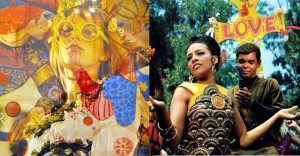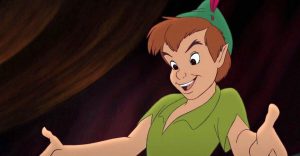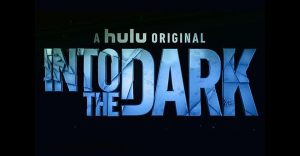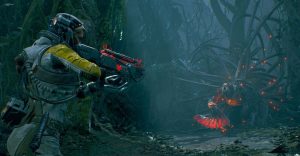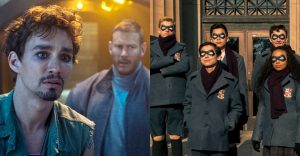10 Biggest Similarities Between The MCU & The DCEU

The Marvel Cinematic Universe and the DC Extended Universe are the apex franchises when it comes to the superhero genre. Marvel’s The Avengers has been a massive success, whose sequels have ruled the box office and enabled the franchise to branch out into television and further movies.
DCEU has also found its footing with well received movies like Wonder Woman and The Suicide Squad and is also venturing to the small screen with Peacemaker. Both cinematic universes have tried and tested tropes to thank for their success. These are shared among the DCEU and MCU, a lot of aspects similar to the other. In essence, viewers who have seen a movie like The Avengers will be aware of what to expect in Justice League, and it’s worth taking a deeper look into this.
10 A War Movie That Ends With A Time Jump

Both Wonder Woman and Captain America: The First Avenger are pivotal for steering the direction of future entries in their respective franchise. What’s interesting is that they have about the same concept with little to separate one another.
The two movies have the protagonist engage in a world war where they look to stop the main villain from using deadly weapons while falling in love with their closest ally. Their experiences also open the heroes’ eyes toward the fact that they alone can’t put an end to the evils of the world. Finally, the heroes are separated from their love interests and mourn them at the end after a time skip to the present day.
9 Dysfunctional Teams With A Familial Bond

Both franchises have separate movies that don’t conform to the overall series norm. Guardians of the Galaxy serves this purpose for the MCU, with the human Star-Lord accompanied by the alien assassin Gamora, Drax the Destroyer, the genius Rocket Raccoon, and a humanoid tree in Groot.
DCEU has a similar team with Task Force X, with their dysfunctional family dynamic allowing the first Suicide Squad to age pretty well despite initially receiving negative reviews. The two teams have like-minded characters, such as Groot’s naivety being much like King Shark’s, and the factions end up overcoming their differences by banding together to beat the films’ villain.
8 Dynamic Between A Clean-Cut Hero And A Chaotic One

Superhero pairings are common in the DCEU and MCU, as their frenemy relationship brings in both conflict and heartwarming moments. Where Tony Stark doesn’t abide by the rules through his bad-boy image, there’s Steve Rogers as a clean-cut hero who calls people out for using bad language.
This is about the same as Bruce Wayne and Clark Kent, whose differences in opinion and eventual closeness have led to fans shipping DCEU’s Batman and Superman together. The two series have mainly engaged in this practice to give fans a dynamic to follow that continues through multiple movies even when there are different villains.
7 Post-Credit Scenes That Usually Set Up Sequels

The MCU is largely credited with making post-credit scenes popular, mainly due to the exposition these brought for movies to come. Iron Man had Nick Fury approach Tony Stark for the Avengers Initiative, which began the practice of using one movie’s post-credit scene to hype up another.
The DCEU has followed the same pattern, with Suicide Squad’s ending featuring Bruce Wayne gaining intel to set up Justice League. The franchises have also dabbled with bringing purely comedic scenes as well, such as Spider-Man: Homecoming showing Captain America’s claim that the audience waited for nothing. DCEU’s Birds of Prey was similar, with Harley Quinn lying to viewers about a secret of Batman’s but never revealing it.
6 A Greater-Scope Villain

As a cinematic universe is expected to bring characters together at some point, the MCU and DCEU tend to do so by placing a central villain who threatens everyone. The Infinity Saga was all about Thanos’ machinations coming to fruition, with all the heroes fighting him in Avengers: Endgame.
The DCEU has toned this aspect down in recent years but built up its initial series based on Darkseid’s potential destruction of Earth and the formation of the Justice League as a result. The villains of the two series are also similar, in that they are powerful aliens who command armies and initially send their underlings to fight the heroes before stepping in themselves.
5 Protagonists Having Issues With Their Parents

Most of the protagonists’ characterizations are based on either the absence of their parents or their inability to gain their approval. The MCU featured many of these, including Tony’s resentment of Howard’s lack of care toward him, Natasha’s anger toward her adoptive parents abandoning her, and Star-Lord’s father killing his mother.
Along the same lines, much of the biggest character developments in the DCEU have been due to the familial bond. This was seen with Cyborg’s reconciliation with his father, Clark understanding why Jonathan sacrificed himself, and Billy Batson realizing that his foster family truly loved him, unlike his real mother.
4 A Big Event That Causes Dissention Among Heroes

In order to create tension independent of antagonists, the franchises have brought in storylines that see the heroes face off. This is the result of a huge disaster that is an indirect result of the vigilantism of the protagonists. The MCU had the Sokovia Accords ratified due to the Avengers accidentally setting off a bomb in Lagos during a mission.
Meanwhile, the DCEU had Batman target Superman after the latter’s fight against Zod decimated the city, resulting in massive casualties. This ultimately allows future villains to capitalize on the situation, with Thanos’ forces invading Earth easily after the Avengers are broken, while Steppenwolf invades because of Superman’s death.
3 Stories Told Out Of Chronology

Although the cinematic universes largely conform to a continuation of the story from previous movies, there have been exceptions where later releases have stories set in the past. The DCEU’s Wonder Woman movies are about Diana’s adventures before her debut appearance, with the intention to explain how she got to where she was in Batman v Superman.
The MCU engages in this on a much larger scale, with Guardians of the Galaxy Vol. 2, Captain Marvel, and Black Widow releasing quite a few years after many other movies but being set before them.
2 Hidden Kingdoms That Are Extremely Advanced

There are particular characters who can be considered outsiders due to their status as royalty. These heroes don’t have anything to fear from the world’s governments since they belong to independent and vast kingdoms that are far more powerful.
The MCU’s most significant such characters are Thor and Black Panther, hailing from Asgard and Wakanda, respectively. Their technology is so advanced that they are considered akin to magic by most. Aquaman has the Kingdom of Atlantis and Wonder Woman features Themyscira, with the titular characters being heir to the throne. These are considered to be the most dangerous locations in the DCEU, but the heroes’ control over them negates this aspect.
1 Use Of MacGuffins To Drive The Plot

As it usually goes with comic book stories, plots are determined by the characters chasing after MacGuffins that either grant special powers or contain vital information. The Infinity Stones served this purpose for 23 movies in the MCU, as they kept popping up frequently and were Thanos’ main quest.
The DCEU has featured MacGuffins in smaller scales but still in most of its movies. Justice League had the Mother boxes while Wonder Woman 1984 had the Dreamstone. MacGuffins were also seen in Birds of Prey with Black Mask’s pursuit of a diamond, along with The Suicide Squad’s flash drive that Task Force X was sent to procure.
About The Author











